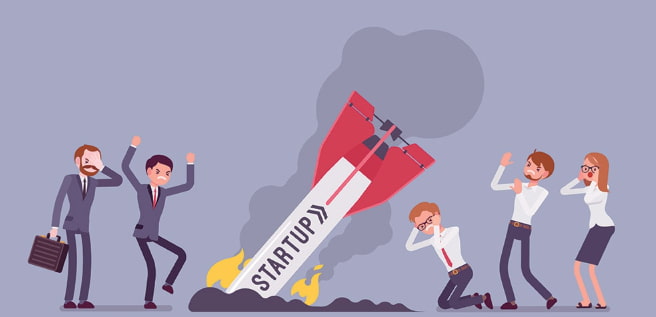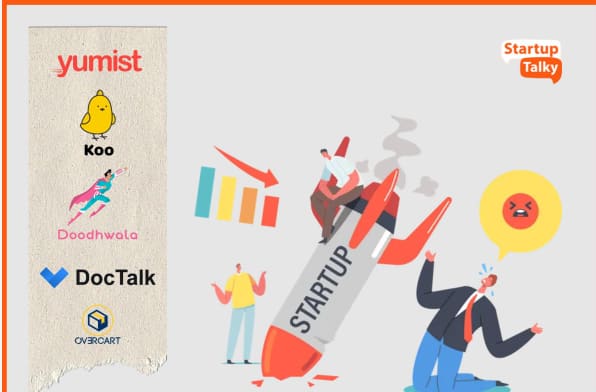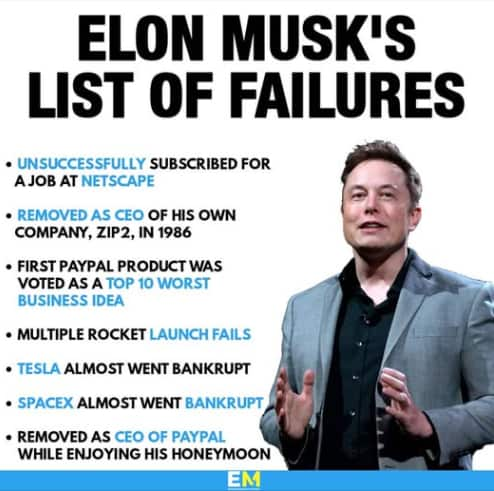Contents
Hello entrepreneurial spirits and curious explorers! We are all chasing after bright ideas, million-dollar investments, and Silicon Valley dreams, aren’t we? But there is another side to the coin: Failure. Yes, that scary word. But wait! Failure may not actually be such a bad thing. On the contrary, when read correctly, it can be one of the most solid steps for your future success. Examples of failed startups are important to all of us
We have previously touched on the subject of why startups fail, pitch decks and examples of successful startups. In this article, we will take a look at some unforgettable but failed startups that we will all say “Why didn’t it happen?”. Our aim is not to criticize anyone, but to put the golden lessons distilled from these stories in our pockets.
If you are ready, let’s take a journey into the world of those startups we call “failed but taught”!
Remember, every fall is an experience for a new takeoff.

Why Do Brilliant Ideas Sometimes Hit a Brick Wall?
First of all, let’s face it, just because an idea is brilliant doesn’t mean it will definitely be successful. The entrepreneurial world is full of ideas that look great on paper but fail in practice for various reasons. Sometimes the problem isn’t the idea itself, but the timing. The market may not be ready for that innovation yet, or conversely, similar ideas may have already reached saturation by the time you launch. In other words, the subject of failed startups example is not a uniform one.
For example, the video rental giant Blockbuster’s failure to keep up with the rise of online platforms like Netflix is a painful example of not being able to read the market’s changes. Timing is often everything, and those who fail to strike this delicate balance are unfortunately out of the game.
Another common scenario is “misunderstanding the market need” or, worse, “trying to create a solution to a problem that doesn’t actually exist.” We all fall in love with our own ideas, and that’s natural. However, this love can sometimes blind us and prevent us from seeing what potential customers really want and need. Some of you may remember a company called Juicero. This system, which works with an expensive juicer and only its own special bags, turned into a huge disappointment when users realized that they could also squeeze the bags by hand. In other words, even the most technologically advanced product can lose its meaning if there is no “real” problem to solve.

Financing and cash flow management are also one of the fatal Achilles heels of startups. You may have a great product and a motivated team, but if you don’t have money in your coffers or if you can’t manage your money properly, it becomes impossible to keep the lights on. Startups that aim for rapid growth in particular can often fall into this trap. Webvan set out in the late 90s with the dream of becoming an online grocery shopping giant and received huge investments. However, uncontrolled growth, high operational costs and the failure to achieve the expected profitability caused the collapse of this giant.
Burning money can only go so far; it is impossible to cross the ocean without a sustainable income model.
Competition, Team and Finance
Intra-team dynamics and managerial incompetence are also silent killers. When we talk about examples of failed startups, these issues come to the fore. The team, which is the engine of a startup, can also be its weakest link. Disagreements between founding partners, differences in vision, wrong hirings or inadequate leadership can drag even the brightest ideas into the swamp. Let’s not forget that it is not only the idea that brings a startup to success, but also the people who bring that idea to life, who can unite in the face of difficulties and make the right decisions. When team chemistry does not work, unfortunately, the ship starts to leak water and often sinks.
Finally, underestimating the competition or being inadequate in marketing strategies is also an important factor on the road to failure. It is important to remember that there are other players in the market than you and that they are also trying to reach your customers. Setting out without analyzing your competitors well and knowing their strengths and weaknesses is like walking blindly in a minefield. Similarly, even if you have a great product, if you cannot reach the right target audience, with the right messages and through the right channels, no one will know.
Marketing is not just about advertising, it is also about telling a story and creating a connection. Those who fail to create this connection will unfortunately get lost in the crowd.

Examples: Why These Attempts Failed Startups?
We have covered the theoretical reasons for the failed startups examples so far, now let’s reinforce these lessons with some concrete examples. Some startups set out with such high hopes and investments that their failures made just as much noise. These stories are actually a roadmap not just for saying “oh my” but also for not repeating the same mistakes.
- Our first example is Quibi, which was expected to make a big splash as a short video content platform. It had received major investments from Hollywood giants and aimed to dominate the market with mobile-first, high-quality, and short content. Sounds great, right? One of Quibi’s biggest handicaps was misreading the market and user habits. While people spent more time at home during the pandemic and turned to longer content, Quibi insisted on only mobile devices and short formats. It had a hard time competing with platforms with free and huge content libraries such as TikTok and YouTube. Moreover, not making their content shareable also prevented their organic growth. The result? They had to close down after just six months of raising millions of dollars. The lesson: User experience and the real dynamics of the market are more important than even the brightest ideas.
- Another memorable example is Juicero, which we mentioned earlier. This startup has become a symbol of “over-engineering” and “unnecessary technology” in Silicon Valley. It had a $700 Wi-Fi-connected juicer and only used special fruit and vegetable bags that they made themselves, which cost $5-7 each. The idea was to make it easier to drink fresh and healthy juice. But when Bloomberg reporters revealed that these special bags could be squeezed by hand, the company’s entire value was suddenly questioned. In other words, the problem it claimed to solve wasn’t as big as it was made out to be, and the solution it offered was overly expensive and complicated.

Juicero and Google | Glass Failed Startups
- Juicero’s story teaches us that when developing a product, it is vital to ask the question “Why?” Do customers really need this product? Is the value you are offering worth the price you are asking? Technology should be a tool, not an end. If technology makes a simple problem more complex and expensive, then there is a problem. Despite receiving $120 million in investment, Juicero was forced to disappear from the market because it could not provide satisfactory answers to these basic questions. Simplicity and real user benefit are often more valuable than the most complex technology.
- The number of failed startups and examples can be multiplied: Google Glass (privacy concerns and social acceptance issues), Friendster (one of the first social networks to lose out to Facebook), Kodak (a giant that could not see the digital revolution)… Although each story has different nuances, the common theme is usually misreading market dynamics, ignoring user needs, financial indiscipline or not being able to keep up with change. The important thing is not to watch these stories like a horror movie, but to apply the lessons in them to our own entrepreneurial journey. Every failure is valuable data on what didn’t work.

Examples of Failed Startups and Lessons
Yes, dear friends, as you can see, the path of entrepreneurship is not paved with roses, but it can also be full of thorns. But the important thing is not to get stuck on the thorns, but to learn from them and continue on the path more wisely. Examples of failed startups are actually valuable teachers who show us what not to do. They remind us again and again of the importance of market research, the value of being flexible, the vitality of cash flow and most importantly, the necessity of listening to the customer.
Remember, not every failure is the end, but if the right lessons are learned, it is the harbinger of a new and stronger beginning. Don’t give up believing in your own ideas, but don’t hesitate to test them, be open to criticism and pivot when necessary. Who knows, maybe you will write the next big success story! As long as you know how to learn from your mistakes.
In other words, facing examples of failed startups should not discourage entrepreneurs and should encourage them to act more carefully and consciously. Remember, not every failure is the end; if the right lessons are learned, it is the foundation of a new beginning.
